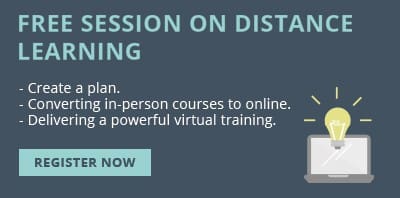Individuals and small businesses have recently received financial assistance in the form of stimulus packages. However, many public health are chronically underfunded.
[Related: 5 Ways To Save Your Budget with a Sustainable CHW Training Program]
State public health departments—always scraping for more in their budgets—and other programs funded by grants or the CDC are experiencing huge staffing cuts and declining spending.
This is at odds with the fact that public health initiatives can reduce overall healthcare spending while improving outcomes. This includes those programs employing community health workers/promotores (CHWs/Ps) and other community-focused health workers can help improve outcomes. But their programs are often the first to go.
Finding funding isn’t always straightforward, so it can pay to think crooked. We worked with program leaders from states around the US to uncover and brainstorm creative possibilities for funding. Here they are, grouped into categories.
National Funding Resources for Healthcare Agencies
- Various Funding Categories
- General Funding Sources
- COVID-19 Grants and Funding
- Private Donors
- Unexpected Departments and Sectors
- Partners
- Strategy Ideas
- Mixing Funding Streams
Various Funding Categories
Before starting on any grant-seeking expedition, it pays to understand the terminology around different kinds of funding and what it means. Spend some time with a glossary. This could help you structure projects that fit in areas you might not have considered. For example:
- seed funding
- place-based funding
- capacity-building
- supporting the non-profit sector
General Funding Sources
National Network of Libraries of Medicine
The National Network of Libraries of Medicine (NNLM) is a collaboration of members with the shared goal of advancing medicine and improving public health by giving health professionals access to biomedical information and improving individuals’ access to information to enable them to make informed decisions about their health. It’s comprised of academic health sciences libraries, hospital, pharmaceutical and other special biomedical libraries, public libraries, information centers, and community-based organizations.
NNLM offers funding for projects that improve access to health information, increase engagement with research and data, expand professional knowledge, and support outreach that promotes awareness and use of NLM resources in local communities. It includes many funding opportunities you might not think of, such as grants for holding training in libraries.
Candid Newsletters
Candid, a merger of the Foundation Center and GuideStar, publishes a handful of helpful newsletters focused on fundraising, boards, best practices, and more. The Candid Newsletters include the Funding Watches are monthly newsletters that summarize news in subject-based philanthropy, links to resources, funding opportunities for individuals and organizations, and job listings. There are also a selection of regional newsletters and the useful RFP Bulletin.
Council on Foundations
The Council on Foundations is a philanthropic network and nonprofit leadership association of grantmaking foundations and corporations. You can use the Council on Foundations website to scan through members to find out who is giving grants. The membership directory is for members only, but the website is still full of references and keywords that can help in a search.
Grantmakers in Health
Grantmakers in Health is a networking group for funders that reveals trends and directions in grant making. The site provides announcements of grant funding, such as “The Well Being Trust, a national foundation dedicated to advancing the mental, social, and spiritual health of the nation, recently announced new grant funding for twenty-six initiatives as part of their California Mental Health and Wellness Initiative.”
COVID-19 Grants and Funding
The coronavirus is creating some funding opportunities meant to offset the disruption caused by the virus. According to an article by Moss Adams, “Large sums have been designated for health care industry purposes. The federal agencies will award the funds directly to health care providers as well as to states or state agencies, which will then pass the funds to hospitals and provider recipients.”
Some funding opportunities include FEMA public assistance awards,
Community Health Center (FQHC) Grants, telehealth grants, and a helpful grant Distance Learning and Telemedicine Grants from the Department of Agriculture Utilities Programs useful for any organization trying out online training for the first time.
Private Donors
Many agencies make a habit of looking at the general funding sources listed above. But they ignore many private sources of funding that are less well publicized. Some examples are:
- One Susan G Komen affiliate received a bequeathal that set up a patient navigation training program.
- Banks have community funds programs that must be spent. Some got fined for not spending their funds, so they may be eager to find an outlet for their money. Check out US Bank Community Possible Grant Program, Deutsche Bank Small Grants Fund, People’s United Community Foundation.
- Health plans, such as BlueCross BlueSheild’s Mobilize AZ, which gives funding for substance use disorder, mental health, and diabetes
- Crowdfunding may be a way to find out what a community wants and raise funds from individuals. This could be a way to set up scholarships. States, look to partners for managing these. Examples are GoFundMe, Kickstarter, ChipIn, or these alternatives.
Unexpected Departments and Sectors
Think outside of public health for funding other than or connected to health, like science, transportation, or other areas dedicated to social determinate of health. Note to examine your buzzwords, neutralize them, and learn the buzzwords in other sectors.
Some ideas:
- Department of Transportation and Highway Safety, which wants to use CHWs to promote the use of car seats.
- Reproductive Health provides funding to boost maternal health programs.
- Partnering with doula organizations for post-partum maternal health, for what is a doula but a CHW?
- Departments of Housing, e.g., Healthy Homes, Housing Trust Fund
- CitizenScience, which works largely in technology and environments but also population health (Smoke Sense is a project that aims to understand the extent to which exposure to wild land fire smoke affects health and productivity, as well as inform health risk communication strategies that protect public health during smoke days; SONYC is a smart cities initiative focused on developing a cyber-physical system (CPS) for the monitoring, analysis and mitigation of urban noise pollution; GoViral is a free and real-time online Cold & Flu surveillance system administered by researchers at New York University. Participants will get a Do-It-Yourself flu saliva collection system that they can keep and use at home if they are feeling sick.)
- Keep looking for federal, but also state and community funding sources.
Partners
Partners can help share the load and also open up possibilities for new grants. Some examples:
- Indian Health grant for diabetes
- Good Health and Wellness (Indian) – careful of duplicating efforts
- CHRs
- EMS (guiding CHWs to getting certified in CPR and First Aid)
- Gaming Commissions often need to spend their money on communities
Strategy Idea: Mixing Funding Streams
Lastly, think about strategy when looking for funding. Remember that funding seeds funding. Funders look at successful programs that have already received money as potential sources for additional funding. They want their investment to succeed.
Sometimes you can increase funding if you tell one funder that you’ve received funding from another. They can provide a matching grant for the same cause.
Disclaimer: This article is a basic resource and is not comprehensive. We’ll continue to update it to add more information as funding opportunities become available or change.
Photo by bongkarn thanyakij from Pexels



